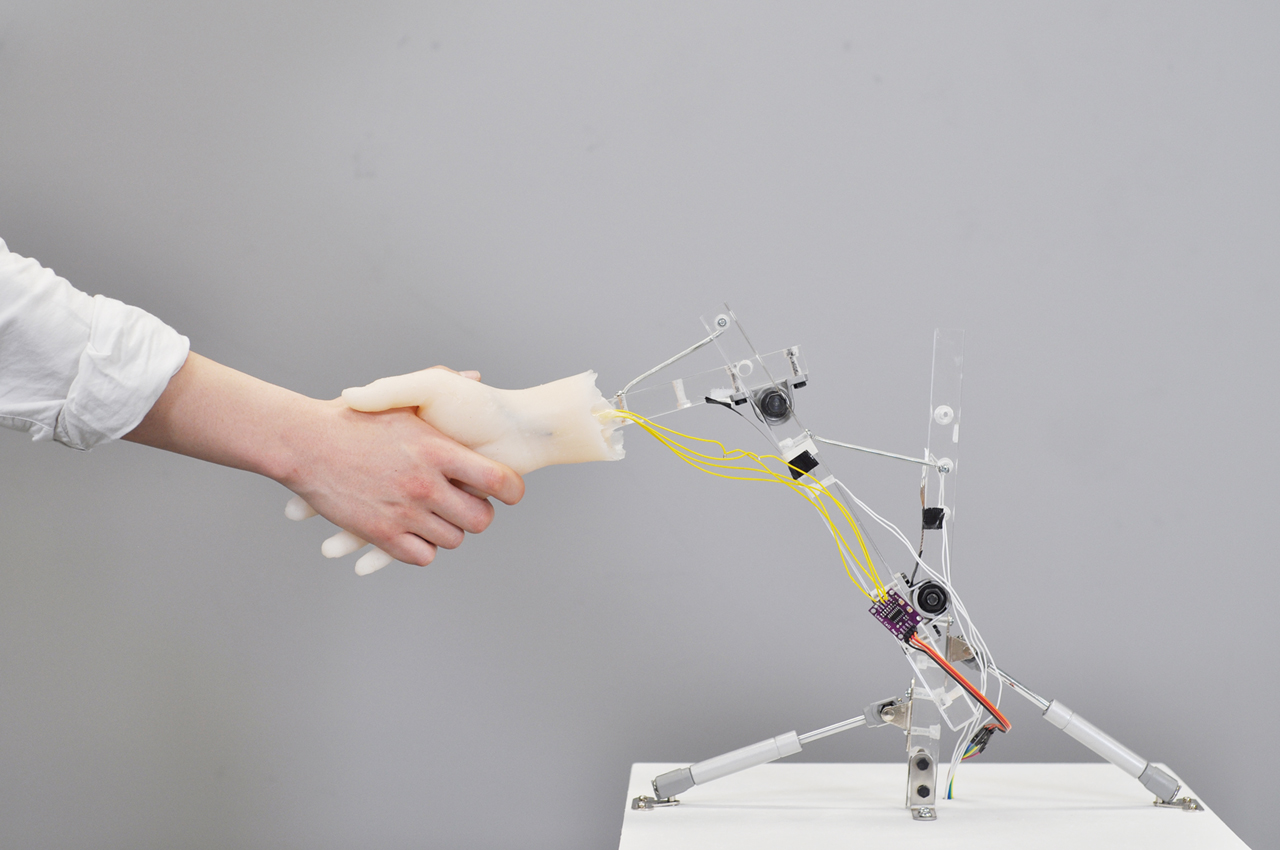Size - 400 . 400 . 600 (mm)
Completion - 2018
Collaboator - Suhyun Nam (Hand model making)
Abstract
If automation technology continues to be accepted in the world at the rate it is now, it is only a matter of time before all human to human interactions are not only diminished via automatic machines, but also lose polite behaviours as well.
This project enhances politeness of people in fully automated society where there are few chances of moment when they exercise and practice politeness to other people.
What sort of tools do we need to maintain the chances for people to exercise politeness in automated society?”
These objects are designed in anticipation of that time.
This project enhances politeness of people in fully automated society where there are few chances of moment when they exercise and practice politeness to other people.
What sort of tools do we need to maintain the chances for people to exercise politeness in automated society?”
These objects are designed in anticipation of that time.

A focus on language can also be seen in the work of students from Information Experience Design. Summarising their work, Dr Kevin Walker, Head of Programme, explains that 'their outputs speak for themselves, and these graduates do more than merely communicate information or design experiences – they embody expertise’: a sentiment that is evident throughout the Programme. Marcela Uribe Fores’ MEDIUM incorporates the poems of politically disadvantaged indigenous Chilean women, translated across multiple languages, into a sound-and-light installation. In combination with the architectural qualities of the work, MEDIUM creates a liminal space in which we can confront tradition, politics and the power of language.
This exploration of the physical space in which communication happens is a theme that runs throughout Grace Pappas’ Material Memories, which envisions the museum experience as a machine that the visitor operates through their presence; a data interaction made material. Taeyoung Choi’s Politeness demonstrates similar preoccupations. Whereas Pappas’ work was an analogue expression of information, Choi’s is a digital, robotic manifestation of the concept. Inspired by the idea that in the future human-to-human interactions, even those born out of politeness, will be eradicated, Politeness functions as a learning tool for future citizens. With one robotic arm inputting the data of our handshakes in 2018, the other arm enacts the learned behaviour of all those who have interacted with it. Key to the work is its materiality – the clammy latex of the hand, the impersonality of the metal arm – but also its performativity, with the audience forced to become a part of the piece itself.

[Show 2018 School of Communication: Questioning the Everyday]

Touch-screen

1. Best Handshake on the input side
until the three different input graph(Green-wrist, Yellow-elbow, Red-pressure) are generated and start moving.

2.Press Send button.
The simulator next to the input side receives handshake data and update its database of collected handshake patterns.

3. Press ‘Simulate’ button on the touch screen.
The latest handshake pattern generated from its database gets the robotic hand simulating the best handshake from 2018 for future humans.

Prototype testing video

